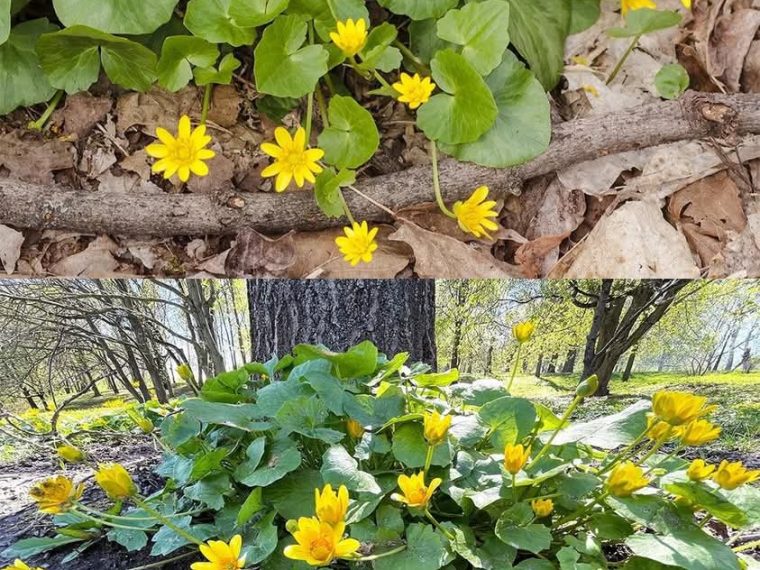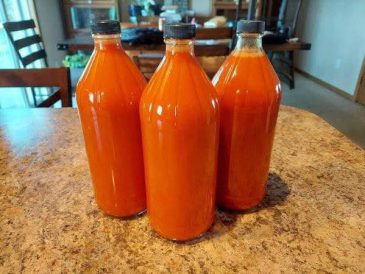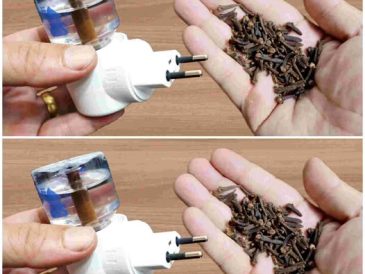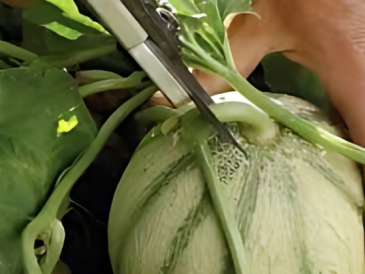Lesser Celandine, known scientifically as Ficaria verna (formerly Ranunculus ficaria), is a low-growing plant that bursts into bloom in early spring with bright yellow flowers. Often found carpeting forest floors, damp meadows, and garden edges, this plant has a long history in folk medicine—especially in Europe. However, while it offers unique benefits, it also comes with serious cautions that should not be ignored.
Let’s explore the traditional uses, health benefits, and safety considerations of this striking but misunderstood plant.
What Is Lesser Celandine?
Lesser Celandine is a member of the buttercup family. Its shiny, heart-shaped leaves and star-like flowers make it easy to recognize during early spring. Historically, it has been associated with seasonal cleansing and topical healing, but much of its popularity comes from its traditional use in treating hemorrhoids—so much so that it was once nicknamed “pilewort.”
Health Benefits of Lesser Celandine
1. Natural Relief for Hemorrhoids (Piles)
Lesser Celandine was one of the most trusted folk remedies for hemorrhoids. Its astringent and anti-inflammatory compounds were believed to shrink swollen tissues, reduce discomfort, and ease bleeding when used as a sitz bath, salve, or suppository (prepared safely).
2. Astringent Properties
The plant contains tannins and other compounds that tighten tissues and help reduce surface irritation. This makes it useful in traditional preparations for drying out wounds or treating moist skin conditions.
3. Supports Wound Healing (External Use)
In older herbal traditions, mashed or crushed leaves were applied to the skin to help cleanse and dry ulcers, cuts, or inflamed skin. It was believed to have mild antiseptic properties as well.
4. Helps with Varicose Veins (Folk Use)
Traditional European herbalists sometimes used Lesser Celandine topically for varicose veins, especially when associated with inflammation or surface irritation. It was usually infused in oil or added to creams.
5. Seasonal Detox in Springtime Traditions
In small, carefully prepared doses (dried or boiled), Lesser Celandine was once used to stimulate spring detox processes. It was thought to gently support the liver and digestion after winter diets.
6. Anti-inflammatory Effects (Topical)
When processed correctly, the plant may calm inflamed skin or reduce localized swelling. It was occasionally used for minor bruises and surface irritations.
Important Cautions About Lesser Celandine
1. Toxic When Fresh
The most important thing to know is that fresh Lesser Celandine is toxic. It contains protoanemonin, a chemical that can cause burning, blisters, nausea, vomiting, and diarrhea if ingested or even handled by sensitive skin.
2. Must Be Dried or Heated to Reduce Toxicity
Drying or boiling the plant neutralizes the dangerous protoanemonin and converts it into non-toxic compounds. This is why traditional uses involved dried powder, boiled decoctions, or infused oils, not the raw plant.
3. Not Recommended for Internal Use Without Expert Guidance
Due to its irritant nature, internal use of Lesser Celandine is not recommended today unless done under strict supervision. There are many safer modern alternatives.
4. Can Cause Skin Reactions in Some People
Even external application of the fresh plant can cause contact dermatitis. Always do a patch test or consult a qualified herbalist before using it on your skin.
Common Traditional Uses
- Sitz baths for hemorrhoids (made from the boiled plant)
- Poultices or salves for ulcers or irritated skin
- Herbal ointments for varicose veins
- Spring tonic teas or detox blends (only from dried parts and in tiny amounts)
❌ Never Use Fresh Plant Internally or Unprocessed
This plant is a perfect example of how natural doesn’t always mean safe. It requires preparation and caution, and in many cases, safer herbs can do the same job with less risk.
Lesser Celandine (Ficaria verna) is a beautiful plant with a rich history in herbal medicine. Its value lies mainly in topical applications, especially in soothing hemorrhoids and skin irritations. However, due to its toxic nature in the fresh state, it is not widely used in modern herbal practice. If you choose to use it, always make sure it is dried or properly processed, and preferably under the guidance of someone knowledgeable in herbal remedies.
Disclaimer
This article is for informational purposes only and does not constitute medical advice. Lesser Celandine is considered toxic in its raw form, and internal use is not recommended without professional supervision. Always consult a healthcare provider before using any herbal remedy, especially if you are pregnant, nursing, or taking medication.
Inspired by this? Share the article with your friends!




